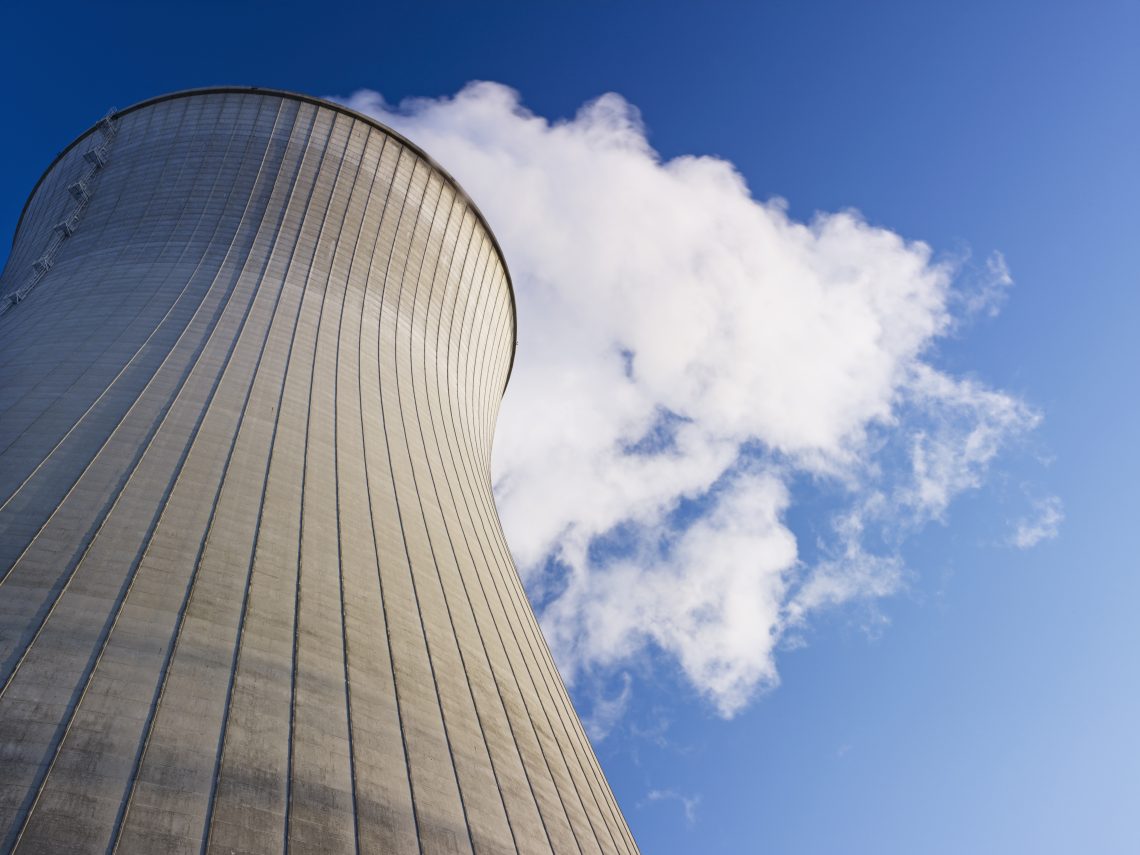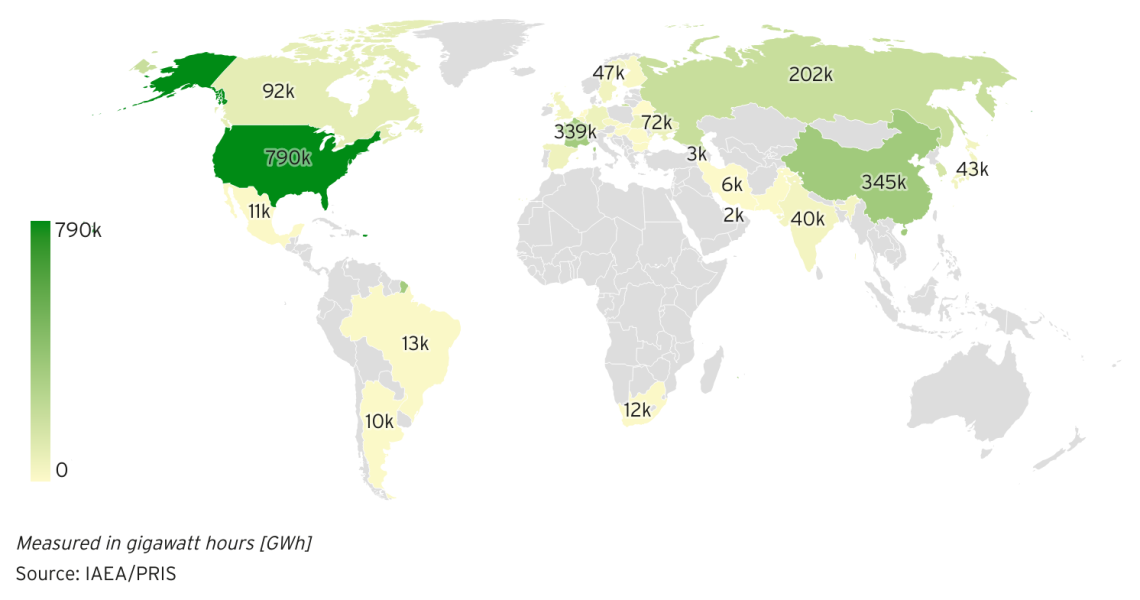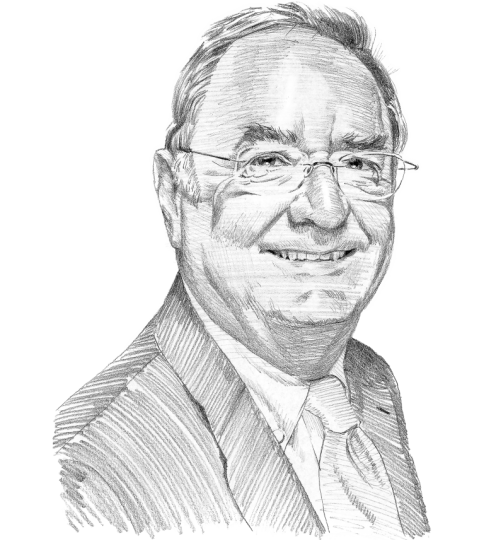Why nuclear power is safer than ever
Despite public concerns, data clearly shows that nuclear power is a much safer energy source than fossil fuels. Recent innovations could soon reduce the risks even further.

In a nutshell
- Nuclear power has been continually improving since its beginnings
- Recent innovations could make accidents virtually impossible
- More preparatory work is needed to implement the newest technologies
For most people flying is scarier than driving a car, even if the latter has been shown to be more dangerous. There is a similar inconsistency with nuclear energy: despite public fears, when measured in terms of deaths per amount of electricity, it is one of the safest and cleanest energy sources. This is especially true compared to fossil fuels. Nevertheless, skepticism toward nuclear energy is often much greater.
For every terawatt-hour of energy generated (roughly the annual electricity consumption of 27,000 people in the European Union) there are 32.72 deaths due to accidents and air pollution associated with lignite. For nuclear energy, this figure is only 0.07 deaths. To make the technology even safer, over the last decades engineers have been working to create new reactor designs that are more efficient and, in some cases, can even be powered with radioactive waste.
First and second generations
Nuclear energy began to spread in earnest after the 1953 “Atoms for Peace” speech by United States President Dwight Eisenhower. Knowledge about nuclear fission had previously been kept secret, but it was released after the speech and several countries received U.S. support to build their own nuclear infrastructure.
The first generation of nuclear power plants was mostly built between 1955 and the late 1960s. At that time, plants still had an electrical output of 300 megawatts. For comparison, a 1000-megawatt reactor generates per year roughly the amount of power needed to supply the city of Vienna.
In the 1950s, first-generation nuclear technology already included a containment to protect against accidents, emergency cooling systems and triple parallel electronic control and safety systems. This means that if two out of three measured variables deviate, countermeasures are taken. These “2-out-of-3” systems are used in all complex technologies (aviation, high-speed trains, railway control, space travel). Today the nuclear power plants of this generation are all shut down and for the most part, dismantled.
The goal of all these improvements is an inherently safe system – protection by natural laws against a meltdown, accidents or human error.
There were numerous improvements with second-generation reactors. They had a higher output, around 800 megawatts (roughly the power consumption of a large city), reinforced containment and multiple after-cooling and emergency cooling systems. Some of these are still in operation today, but they have been extensively upgraded.
Originally, a technical service life of 40 years was planned for these reactors. This period was based on technicians’ initial estimates and could only be determined more precisely through measurements during operation. Numerous nuclear power plants have therefore received approval from authorities to extend their service life by 10 to 20 years. Second-generation plants remain in operation in all countries that operate nuclear power facilities (for example Russia, France and the U.S. to name only a few). Today, it is important to replace these with more modern third-generation reactors.
Facts & figures
Energy from nuclear power, 2020

Third and fourth generations
At the beginning of the 1990s, China, Germany, Russia, South Korea and the U.S. collaborated to standardize official approval procedures. Pressurized water reactors (Generation III) with an output of around 1,000 to 1,500 megawatts were recommended. The safety and protection systems were completely digitized. After the September 11, 2001, terrorist attacks in the U.S., containment systems were redesigned to withstand civil aircraft crashes. Additional safety installations (a ceramic basin or core catcher to contain a potential meltdown) or external pressure vessel-flooding mechanisms were added. The lower half of the pressure vessel is cooled with water from the outside to prevent it from melting from the inside.
As of the end of 2020, 443 nuclear power plants were in operation worldwide. Around two-thirds of them use pressurized water reactors. A pressurized water reactor consists of a thick-walled (25 centimeter) pressure vessel in which water is heated at approximately 320 degrees. Then the heat is transferred to a second circuit, where the water turns into steam that drives a turbine coupled to an electricity generator.
Some 50 third-generation nuclear power plants are already in operation or under construction worldwide, and another 150 to 200 plants are in the planning or preparation phases. China alone is planning 44 new nuclear power plants, and Russia 24. The United Arab Emirates was the first country in the Arab world to put four nuclear power plants into operation and other countries in the region also want to follow suit.
Generation IV reactors (with an output of around 1,000 megawatts) and Small Modular Reactors (SMRs) are considered the nuclear power plants of the future. Currently, 13 of the largest industrial nations (Argentina, Australia, Brazil, Canada, China, France, Japan, Korea, Russia, South Africa, Switzerland, the United Kingdom and the U.S.) and the EU as a whole are collaborating to make Generation IV reactors ready for the market. These systems use the fuel more efficiently by using more of the uranium built into the reactor core. They are economically competitive, produce less radioactive waste and are even safer.
Efficiency improves safety
The goal of all these improvements is an inherently safe system – protection by natural laws against a meltdown, accidents or human error. All Generation IV reactors work at significantly higher operating temperatures than Generation II and III. This increases the efficiency, more uranium is split, and part of the plutonium generated is used again for energy production. In the older generations, this plutonium became waste.
Research is currently being carried out on six specific reactor systems, three of which are “fast-breeder” reactors. The core of a breeder reactor consists of a fission zone where the uranium is split, and heat and neutrons are generated. This zone is surrounded by a mantle where excess neutrons are trapped in other uranium nuclei, and these are then converted into plutonium. In other words, they produce more nuclear fuel than they use. To put it simply, with this technology previously unusable nuclear fuel becomes usable. Breeder reactors can also use the plutonium from second and third-generation power plants as fuel.
Not all of these reactor projects are equally promising, and there is still extensive preparatory work to be carried out. This generation will likely spread in the second half of the 21st century at the earliest.
Meltdown impossible
SMRs, which are also currently being intensively researched, have a comparatively low output (less than 300 megawatts) and fall back on concepts that have already been tried and tested. They are being developed for countries that only have small power grids available. This is often the case in Asia, Africa and Latin America. Thanks to miniaturization, the systems can be prefabricated and quickly assembled on site. They are designed to be ultrasafe, use significantly fewer pumps and pipelines and can also be built underground.
Nuclear energy has the great advantage of guaranteeing security of supply.
A core meltdown is impossible due to the low power and passive cooling systems. (Passive means that no power supply is required to cool the core in the event of a malfunction.) The cooling takes place through natural circulation. Around 50 different models are in development and some of them have already received official government approval, such as the NuScale and Terrapower in the U.S. and the CAREM in Argentina. Furthermore, new concepts are being developed for dual-fluid reactors where molten salt fuel circulates. This would make a core meltdown impossible because the fuel would already be in liquid form.
In addition to generating electricity, small reactors can also be used for district heating or industrial and agricultural complexes (like glasshouses or fishponds). Two multipurpose small reactors (KLT model) each with 35 megawatts of power have already been installed on a floating platform in Siberia. They supply a region of some 100,000 inhabitants with electricity and heat.
Energy supply of the future
Nuclear energy has the great advantage of guaranteeing security of supply. Nuclear power plants are baseload power plants, meaning they are in operation at full capacity for months and ensure a country’s power supply at all times. Run-of-river hydroelectric power plants and coal-fired power plants are also baseload power plants. Peak load power plants, meanwhile, are only switched on when there is an increased demand for electricity, for example in the morning or evening or when it is very cold. These include gas-fired power plants or hydro storage power plants that are switched on to prevent a blackout.
Unlike coal or gas power plants, nuclear power plants do not produce any carbon emissions. This means the technology could play an important role in the fight against climate change if the new ultrasafe facilities turn out to be viable and if the disposal of radioactive waste is managed by building repositories.



